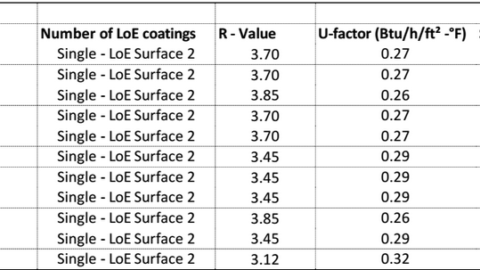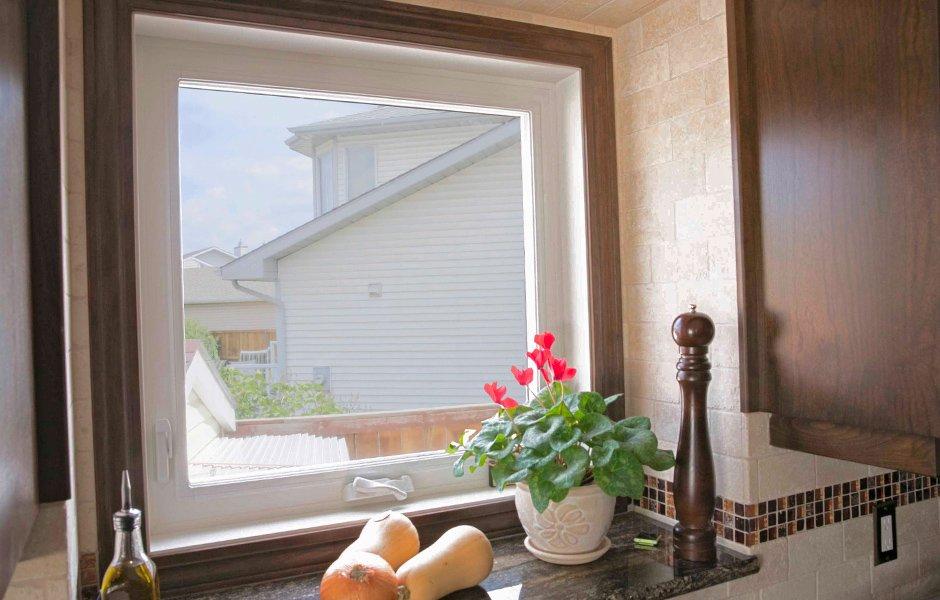How do you compare two windows? Maybe you’d consider the style and colour. Perhaps by the type of window or its function. But beyond the aesthetic and functional comparisons, there has to be a way to distinguish windows by their performance. After all, that’s what justifies investing the money into one window and door company over another.
That’s why the ER rating was established to help customers quantify a window’s performance.
We have already discussed the ER rating at length in previous posts, but it is worth summarizing here briefly.
The ER number is actually derived from a formula as a balance between heat loss through conduction and air leakage (represented by the U-Value), and solar heat gain control through the unit (SHGC).
The R-value, as it is known to most consumers, is really an inverse representation of the U-value. Ultimately, when talking about windows, the U and R values are both a representation of the same thing: the rate at which the glass transfers (loses) heat.
The lower a unit’s U-value number, the slower it transfers heat. Similarly, the higher R-value, the more heat loss resistant the window.
What’s important to understand about U-factor or R-value, is that these numbers only account for the transfer of energy and do not factor in heat gained from the sun. The ER rating is a better representation of efficiency in a real world situation because it accounts for those solar heat gain values.
The ER rating is a better representation of efficiency in a real world situation because it accounts for those solar heat gain values.
Although the ER number is a pretty accurate measurement of a window’s performance, you may be interested in learning about all three of these values as you are planning for a window replacement project.
Understanding how SHGC affects ER Ratings
It goes without saying that you would probably want high R-values (low U-factor) on all your windows. Not so with solar heat gain (SHGC). Recent industry literature points out that windows with even moderate heat gain properties tend to create more overheating than cold discomfort when used on southern or western sides of the house. In plain language this means new vinyl windows are so efficient that they are more likely to overheat your home, than leave it cold.
Remember, the ER rating is an overall score of a window’s efficiency. A window that gains more heat than it loses is technically more efficient. But that doesn’t necessarily mean it is also good at keeping the heat in. Windows with higher SHGC values will also have high ER ratings because they are great at gaining energy. However, for most Canadian homeowners heat loss is of bigger concern. When shopping for new windows consider ones with a better U-factor rather than a high SHGC. That way your windows will reduce the strain on your furnace, and do a better job of keeping the warm air in, even when the heating isn’t on.
This is just one of a few examples of how knowing about the difference in R-value, SHGC, and ER-ratings can help you plan for the best window replacement possible.
R-Value myths
Another common concern we often hear about is the discrepancy between numbers when talking about R-ratings. It is common to see some window and door companies offer a nearly double R-value than a comparable product from their competitors. This is often because some people refer to the factory estimated R-value at the center of the glass. Depending on the unit it is put in, a pane’s R-value will be lower at the edges than in the center. That is why it is more appropriate to use an average R-value to represent the pane as part of the unit, rather than a standalone piece of glass.
Below are a couple of graphs that demonstrate the difference:


As you can see, there is quite a difference between the values in glass performance and the window as a whole. You can always clarify the number with a project consultant, to make sure that you’re both talking about the same thing. This will help you compare windows more effectively, and hopefully provide more information about the differences in windows you’re looking to purchase.
Check out these window replacement articles:
Learn what makes an energy efficient window
Find out how much replacement windows should cost
See our gallery of finished projects

